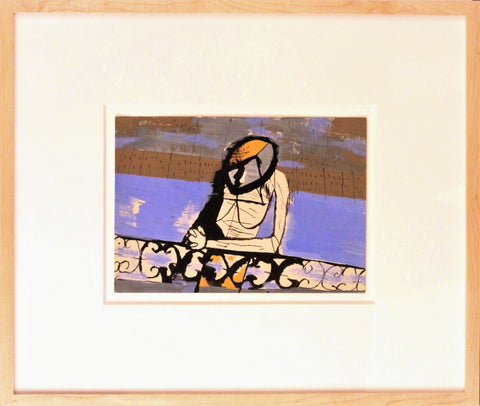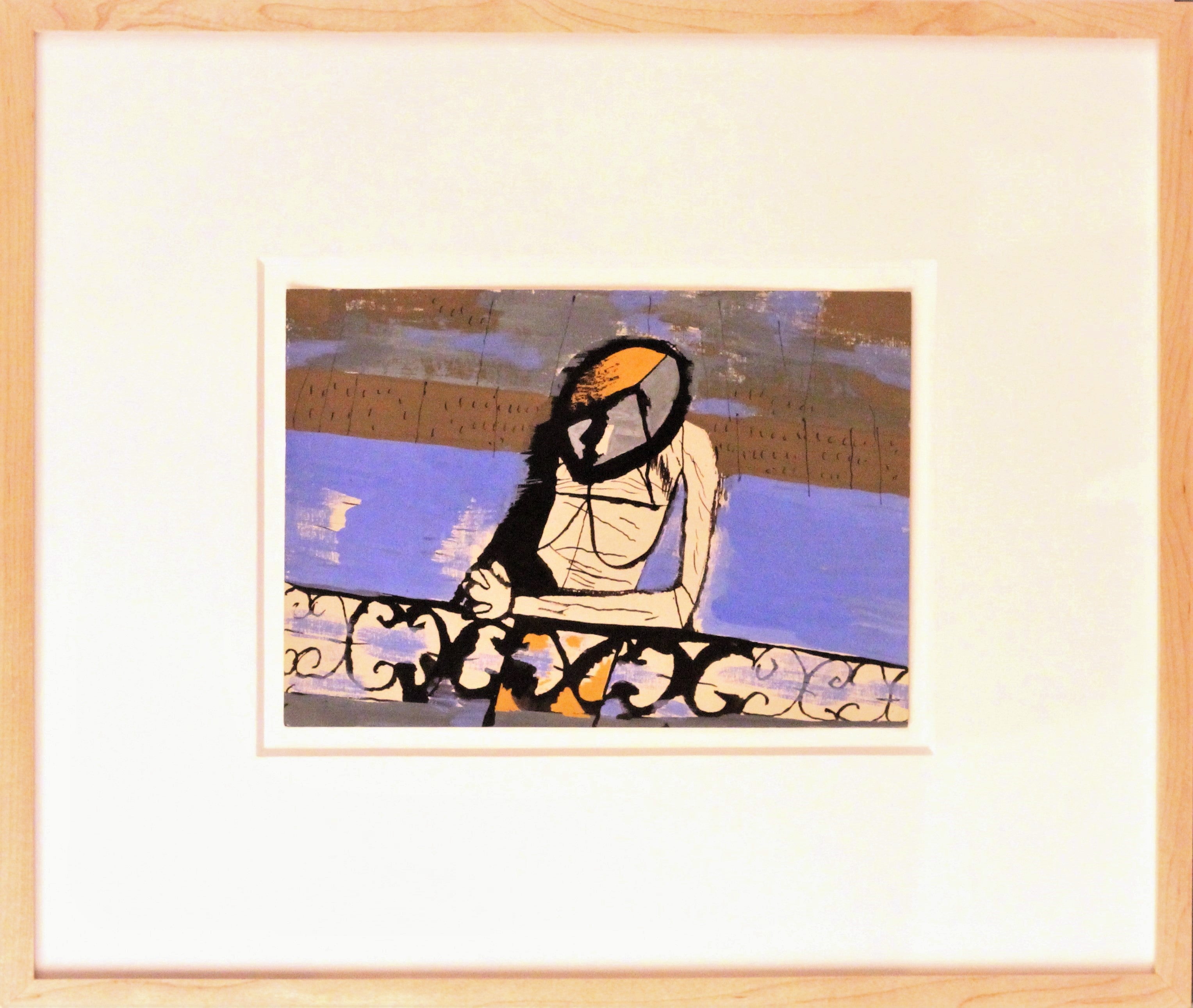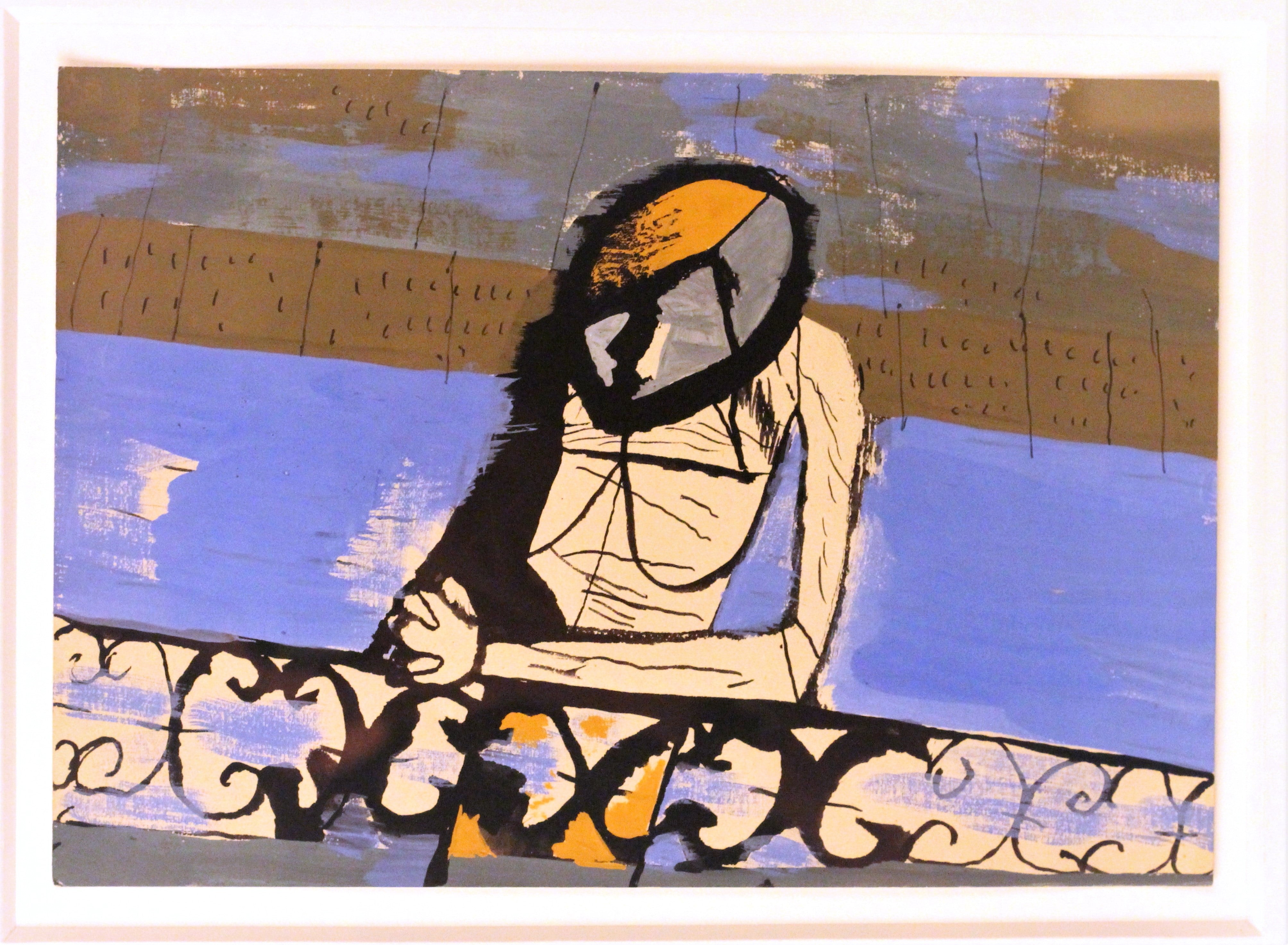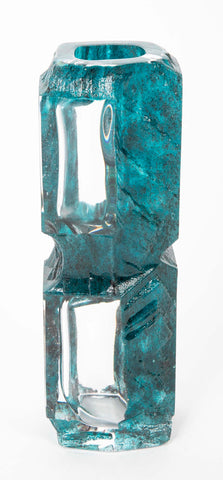

Fontainebleau Fine Art
"Woman on a Balcony” by Mathieu Rosianu (French, 1897-1969) Circa 1940
$0.00
Call For Location | 203-325-8070


Fontainebleau Fine Art
"Woman on a Balcony” by Mathieu Rosianu (French, 1897-1969) Circa 1940
"Woman on a Balcony” - Circa 1940
Gouache on paper – Excellent condition,
no foxing, toning, molding or tears, excellent color preservation
Stamp of the artist’s studio on the back of the work.
6 x 8 ⅜ in (15 x 21,5 cm)
13 ¾ x 16 ¼ in framed (35 x 41,5 cm)
Custom-made, natural maple wood frame with UV conservation Plexi and archival floating 8-ply French mat
Mathieu Rosianu, a painter with a humanist backbone, wanted to give Art the power of a fighting weapon and bring it to the people. Therefore, it is no coincidence that the years before the advent of the “Popular Front” in France in 1936 are among the most active of his life.
Born in 1897 in Bucharest, Mathei (Mathieu) Rosianu, the son of an officer in the National Guard, settled in Paris in 1918. He studied at the National School of Decorative Arts and the National School of Fine Arts under the tutelage of Ernest Laurent until 1924.
More than his academic training however, the example of Cézanne seemed to have been decisive for him. Indeed, we find in Rosianu’s early works the affirmation of volumes, a strong taste for stable forms and the choice of powerfully illuminated motifs reminiscent of the compositions of the famous pre-cubist master. Rosianu’s favorite subject matters: bathers, humble still-lifes, were also those of Cézanne.
Rosianu then shared with many young artists of the postwar period, the need to reinvest the reality from which the most extreme tendencies of the avant-garde Art moved away.
Another defining influence for Rosianu is Roger Bissière, who was presented at the time by critics as his professor/mentor. The qualities of stability and understatement of Bissière’s Art, inherited from Cubism and sensitive to the charm of a discrete and reassuring everyday life, will confirm Rosianu’s own choice to express the values of the world.
He settled in a studio rented by Bissière and exhibited at the avant-garde “Salon de la Société Nationale des Beaux Arts”, the “Salon des Tuileries” and the “Salon d'Automne” until the 30’s.
It is from 1926 that Rosianu appears as one of the few equivalents of a “proletarian literature” for the art of painting that commits to depict the dignity of the working classes beyond their condition. This is evidenced by Rosianu’s paintings of men at work or sharing moments of family life.
The years 1929-1930 marked the start of his political commitment to the Communist Party, where he met artists like Jean Hélion. The heated debates led by the party on the social role of Art will gradually drive him to join the “Association of Revolutionary Writers and Artists” (AEAR) alongside Jean Lurçat, Edouard Pignon…
He then bent his way again to go for a style combining a form of purism (sometimes tinged with fantasy) with the lyricism of themes calling for social revolution. Rosianu diversified his incisive interventions by designing covers for books, magazines, but also posters and wall decoration projects.
But mostly he managed in 1934 to unite the artists of the AEAR for the “Exhibition of the Revolutionary Artists” gathering around the famous painter Fernand Léger, the poet Louis Aragon and the novelist André Malraux, the strongest supporters of political Art.
Rosianu then proclaimed that "a revolutionary ideology cannot communicate with outdated means of expression."
First propelled frontline, the artist abruptly decided in 1935 to withdraw from his political engagement to concentrate on the creation of a paper and fabric design studio under the pseudonym of Emile Arbor. It was with this name that he will be awarded with a Grand Prix for his participation at the 1937 World’s Fair in Paris.
World War II unfortunately wiped out the renown that Rosianu earned in the 30’s. Drafted into the army, he came back traumatized. Entrenched in a self-denied isolation, Rosianu nevertheless kept creating color-rich works as an antidote to his existential loneliness.
This gouache is typical of Rosianu’s everyday life’s scenes rendered in a cubist style inherited from Bissière, Picasso and Braque.
The production of this artist, very appreciated in the 30’s, is being recently rediscovered and actively sought after by collectors of cubist art.
- Provenance:
This piece comes directly from the artist’s studio through its heiress.
- Museums:
The museum of Fine Art of Saint-Etienne near Lyon has preempted a large part of the artist’s studio in order to present the work of this local artist in its permanent collection.





